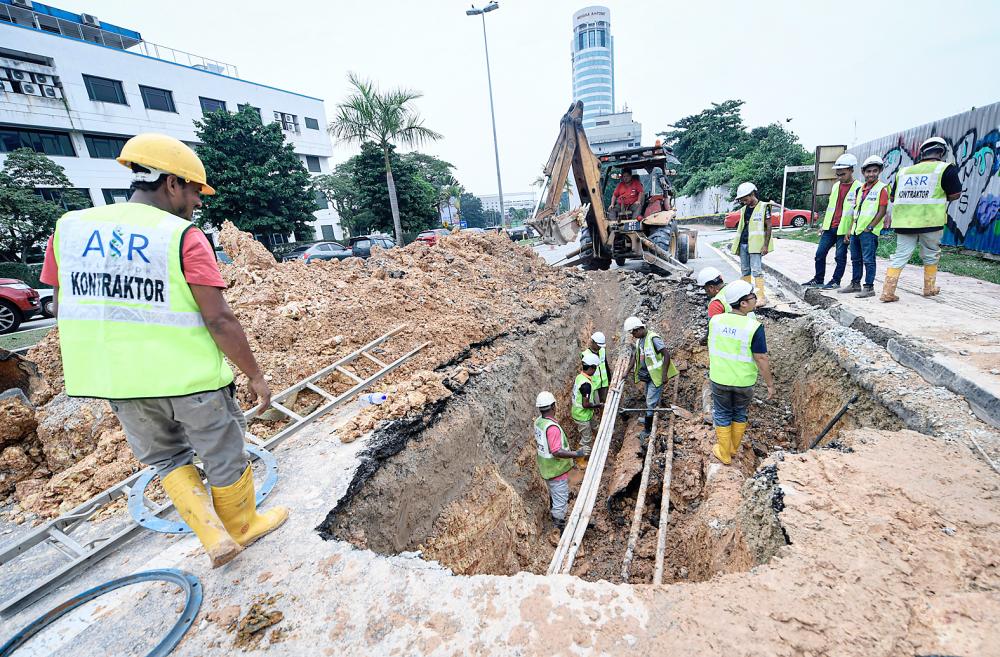THE government’s proposal to raise the water tariff has received mixed response from the public. Academics contend the increase is justified if the extra revenue is used to upgrade the water industry’s infrastructure and provide better services to consumers.
Early last year after the government announced its proposal to increase the water tariff to restructure the water supply services industry, six state governments agreed to it.
It has been reported that the revised water tariff will be presented to the Cabinet for approval soon.
The current water tariff is RM1.38 per 1,000 litres of water.
On Jan 5, Water, Land and Natural Resources Minister Datuk Dr Xavier Jayakumar said states that have not agreed to the proposal have been asked to submit to his ministry their mechanisms to provide clean water supply.
He said this was because the cost of preparing and managing treated water was high and remedial action has to be taken to address water disruptions.
Factors to consider
Associate Prof Dr Ghufran Redzwan, who is attached to the Science and Environmental Management Programme, Institute of Biological Sciences at Universiti Malaya, said any increase in the tariff has to be reasonable but before the new rate is fixed, a few factors have to be considered, including consumers’ willingness and ability to pay.
“If the higher tariff goes hand in hand with an improvement in the quality of water services, then consumers will accord the same importance to the water services industry as they do to the energy sector,” he told Bernama.
Ghufran said the tariff increase will enable water concessionaires to inject more capital into maintenance works, as well as change and upgrade the piping system and distribute clean treated water to consumers more efficiently.
“These works involve high costs and hence the need to increase the water tariff. Moreover, the tariff has not been reviewed in 20 years,” he said.
Some people have the perception that treated water is cheap and readily available which, of course is wrong.
“People must realise that our water resources are becoming increasingly polluted and limited,” he said.
“Not only that, we have an ageing piping system as well. These are the big challenges faced by the water supply operators.“
Guarantee water quality
Ghufran said whether or not consumers get to enjoy better services after the hike will depend on the upgrading of the piping system by the government.
The treated water from the water treatment plant complies with the Health Ministry’s safety standards but its quality may deteriorate by the time it is channelled to consumers due to pipes that have become old, rusty and dirty.
While Ghufran agreed with the government’s move to standardise water tariffs nationwide, he, however, felt that this would give rise to challenges considering that operations and infrastructure maintenance costs differed from state to state.
He said the government should consider giving free water to the hardcore poor, adding that such a move would reflect its concern for underprivileged groups.
He said a 10% rise in the water tariff is deemed reasonable but anything above 50% should be implemented in stages in order not to burden consumers.
“If, let’s say, the tariff is increased by 50%, then consumers will have to pay RM1.80 per cubic metre. So if the current average bill is RM30 a month, it will increase to RM45 under the 50% hike, which will be a burden to consumers,” Ghufran said.
Reduce NRW
Associate Prof Dr Kuppusamy Singaravelloo, from the Faculty of Economics and Administration at Universiti Malaya, said the implementation of the tariff hike would help to reduce the non-revenue water (NRW) rate. NRW refers to water produced by treatment plants but does not get channelled to consumers’ homes due to leakages in pipes, customer meter inaccuracy and unauthorised consumption.
“Nationwide, the NRW rate is about 35%. This means almost one-third of the water that is supposed to go to the consumer is ‘lost’ just like that.
“To some extent, losses as a result of NRW must also be borne by consumers to prevent water operators or suppliers from incurring losses continuously,” he said.
Kuppusamy suggested the government increase the water tariff by a small amount so that consumers do not feel overly burdened.
Water and Energy Consumers Association of Malaysia president T. Saravanan hoped the implementation of the higher water tariff would improve the services of the treated water supply sector and put an end to water rationing.
He said the government could create a plan or introduce initiatives to improve the delivery system, one of which is the smart meter to enable consumers to know their water consumption levels.
“They can adopt measures to save water such as putting a limit to the amount of water they use for their daily needs,” Saravanan said. “This way, they will change their habit of wasting water.” – Bernama
The article was translated from Bahasa Malaysia into English by Rema Nambiar.










